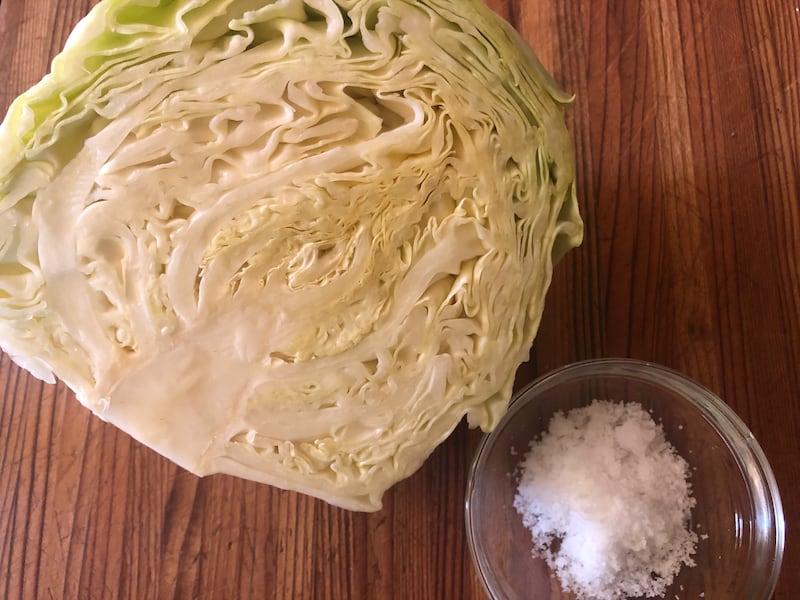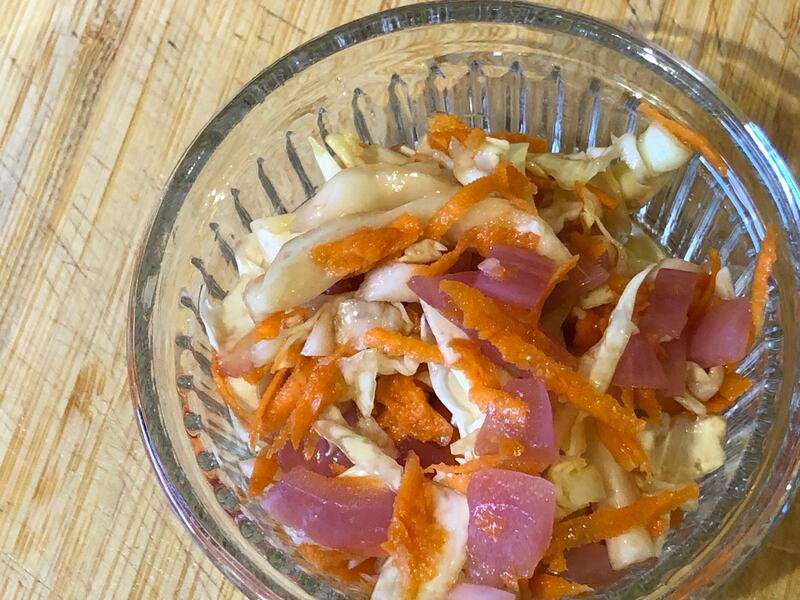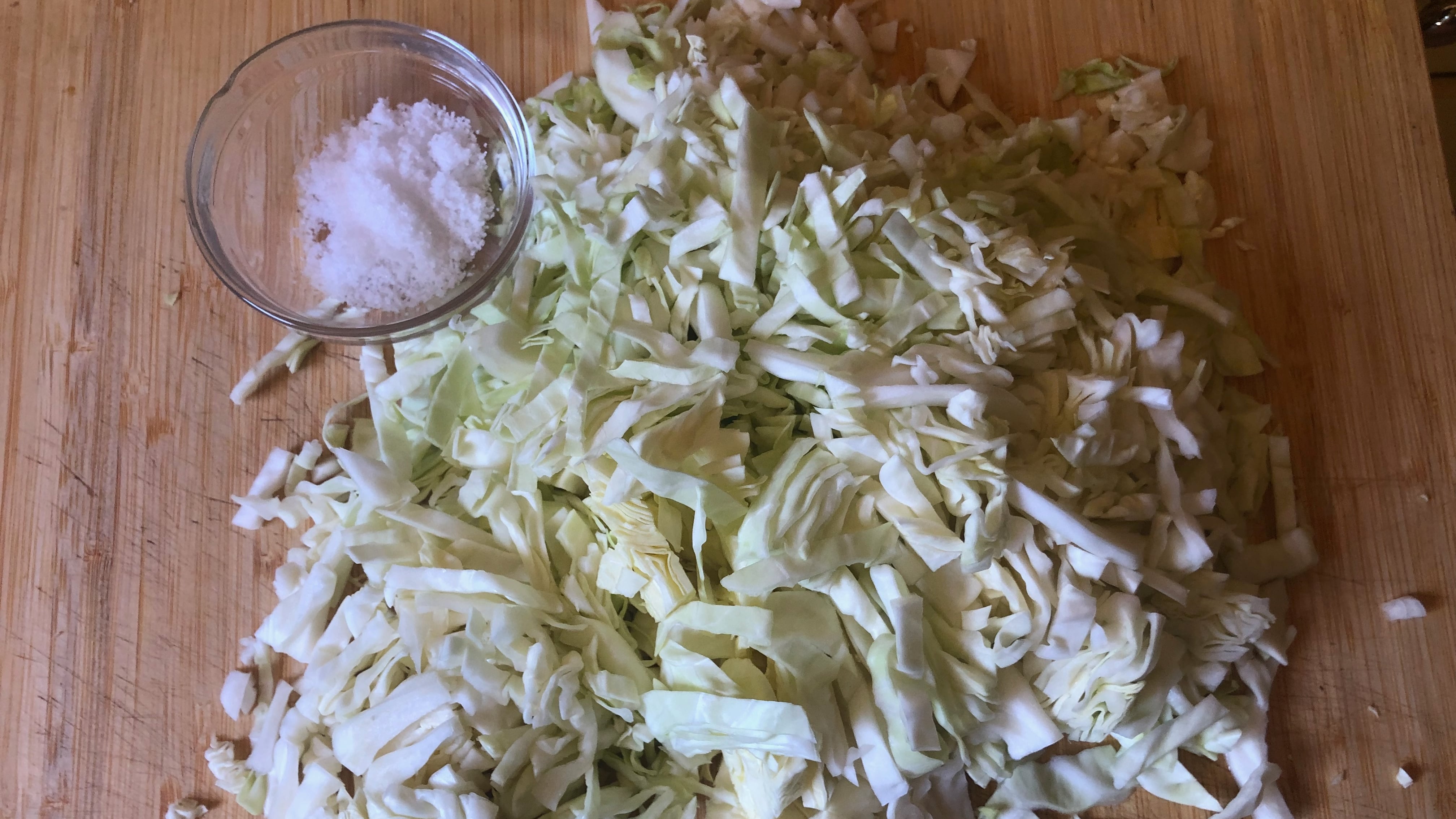Jim Dixon wrote about food for WW for more than 20 years, but these days most of his time is spent at his olive oil-focused specialty food business Wellspent Market. Jim’s always loved to eat, and he encourages his customers to cook by sending them recipes every week through his newsletter. We’re happy to have him back creating some special dishes just for WW readers.
On one of our visits to see the grandsons in New Orleans, we ate at The Elysian Bar, part of the recently restored Catholic church, school and rectory that make up Hotel Peter and Paul. I had a salad that listed fermented cabbage as an ingredient, but what arrived at the table wasn’t the salty, translucent, krautlike vegetable I’d expected. The cabbage looked raw, but it was soft, as if it had been lightly cooked, and had a pleasant saltiness. It was delicious, and I was determined to make it.
After a few tries, I settled on what I call barely fermented cabbage. The process is basically the first step to making sauerkraut, something every card-carrying Portlander is required to master in this fermentation-crazy town. Don’t worry if you missed your indoctrination, it’s ridiculously easy and uses the basic fermenter’s mantra: chop, salt, pack and wait. But the waiting part is much shorter.

Half-a-head of an average 3-pound green cabbage makes about a quart of ready-to-eat greens that are somewhere between raw and barely cooked. Weighing the cabbage and salt works best, but if you don’t have a scale, use about 1 1/2 tablespoons of kosher-style sea salt for half of a cabbage. It should taste pleasantly salty but not too salty.
If you want to be more precise, weigh the cabbage and calculate 2%, then weigh that much salt. Shred the cabbage into thin ribbons, then cut those into about 1-2 inch lengths (chop the core, too, but into very small pieces). Put the strips into a large bowl, add the salt, and use your hands to work it into the cabbage, squeezing to break down the plant’s cells so the salt can work its magic. Cover the bowl and let it sit at room temperature overnight. The next day, transfer your now-barely fermented cabbage into a container. It keeps for at least a week in the refrigerator.
You can use it in any dish that would normally call for raw cabbage. I’ve added it to stir-frys, smothered it Southern-style, made it into coleslaw, and piled it onto both tacos and sandwiches. I’ve also made salads like this: grate a carrot, mix in the cabbage, and add a little pickled red onion, if you happen to have some in the refrigerator.

Barely Fermented Cabbage
1/2 head green cabbage, shredded
1 1/2 tablespoons kosher-style sea salt
Combine the cabbage and salt in a large bowl. Use your hands to squeeze the cabbage to break down the plant’s cell walls and allow the salt to enter. Cover and let sit at room temperature overnight, or for at least a few hours. Store in the refrigerator for a week or longer.

